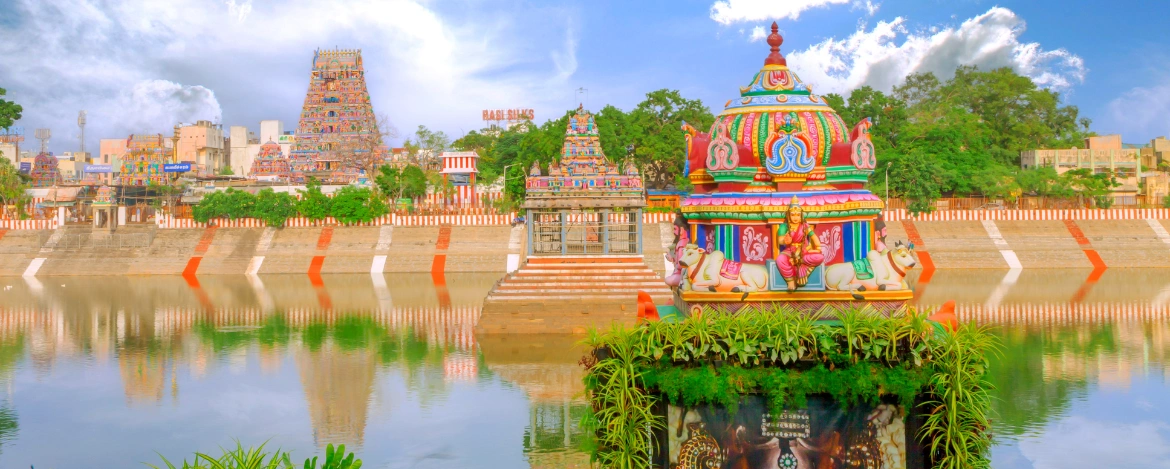About Kumbakonam
Kumbakonam beautifully captures its essence as a confluence of divine lore, temple architecture, cultural richness, and spiritual vibrance. As a town steeped in mythology and living traditions, Kumbakonam continues to be a cornerstone of Tamil Hindu identity and Dravidian heritage.
Here are a few key elements that further elevate Kumbakonam’s unique stature:
🕉️ Spiritual and Mythological Significance
- The Mahamaham tank, central to the town, is said to contain waters from all the sacred rivers of India. Taking a dip here during the Mahamaham Festival (like the Kumbh Mela of the South) is considered equivalent to bathing in all of them.
- The legend of Lord Brahma’s 'kumbha' (pot) settling here after a deluge connects the town with themes of cosmic regeneration and divine order.
🛕 Temple Architecture and Devotion
- Home to over 188 temples, many of which date back to the Chola dynasty, including:
- Adi Kumbeswarar Temple (Shiva) – the spiritual nucleus of the town.
- Sarangapani Temple (Vishnu) – with a towering gopuram and sacred Vaishnavite significance.
- Ramaswamy Temple – unique for depicting the entire Ramayana in detailed murals.
- Navagraha Temples – the surrounding area is one of the few places with temples dedicated to each of the nine planetary deities.
🎭 Cultural and Artistic Contributions
- Renowned for bronze iconography—intricately crafted using the lost-wax method, often representing deities like Nataraja in dynamic poses.
- A hub for Vedic and Agamic education, classical music, and Tamil literature.
- Kumbakonam degree coffee—a cultural icon in itself, known for its aroma and preparation style using brass filters and tumblers.
🗺️ Heritage and Pilgrimage Hub
- Often part of the “Temple Circuit” of Tamil Nadu, including Chidambaram, Thanjavur, and Srirangam.
- Proximity to Darasuram (UNESCO temple) and Swamimalai (Murugan temple) adds more depth to any pilgrimage or cultural itinerary.
